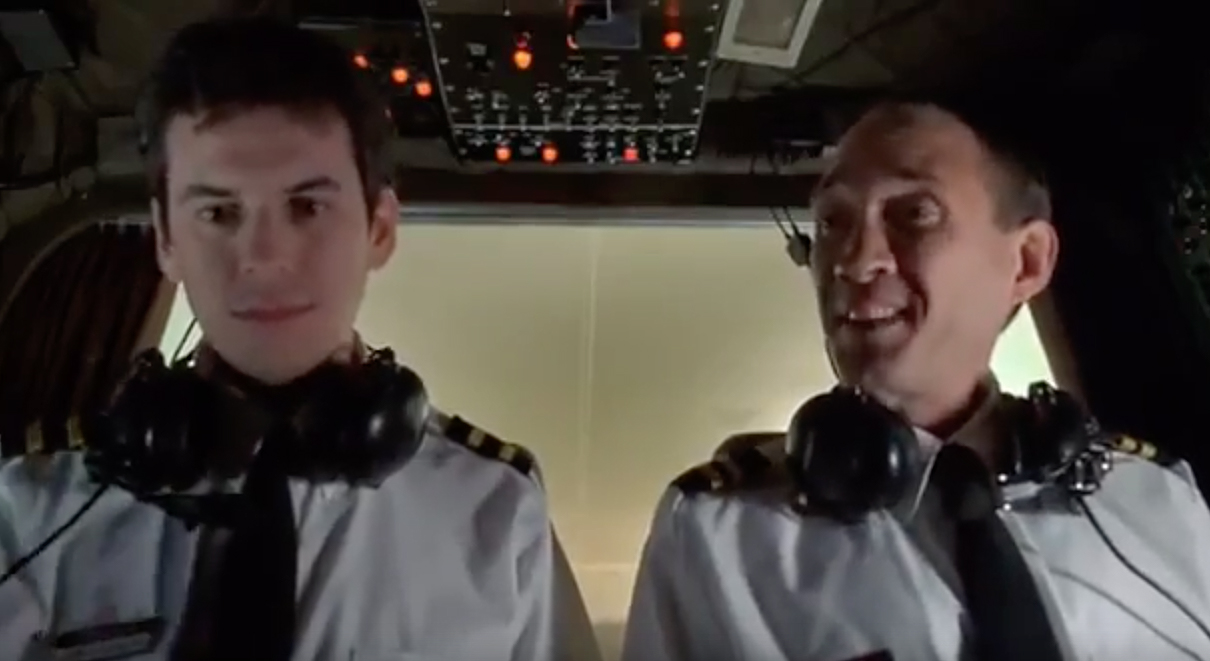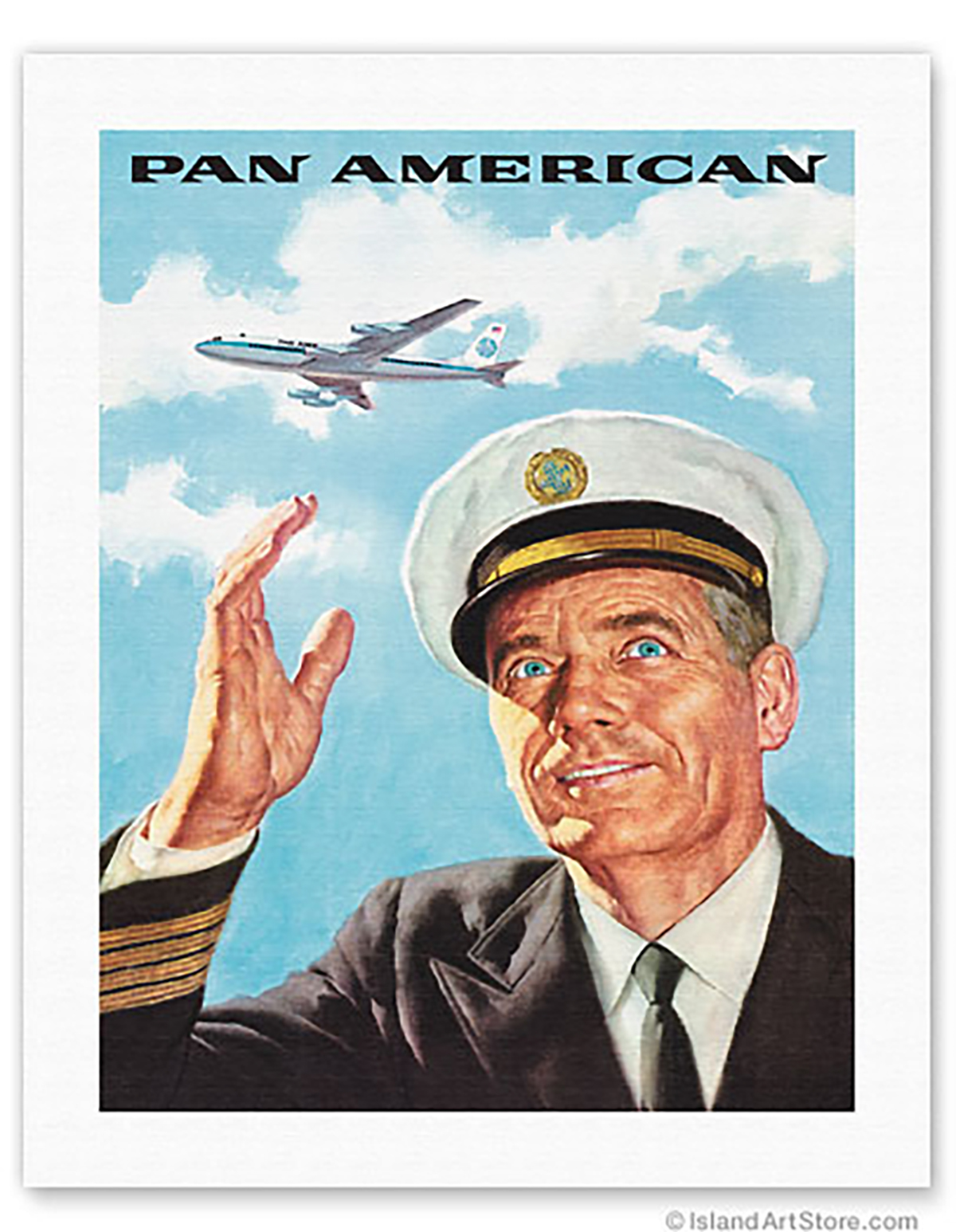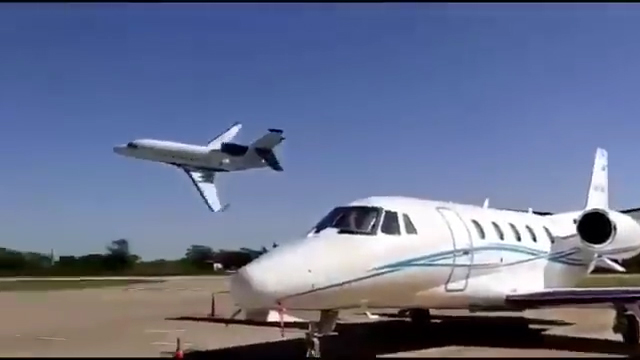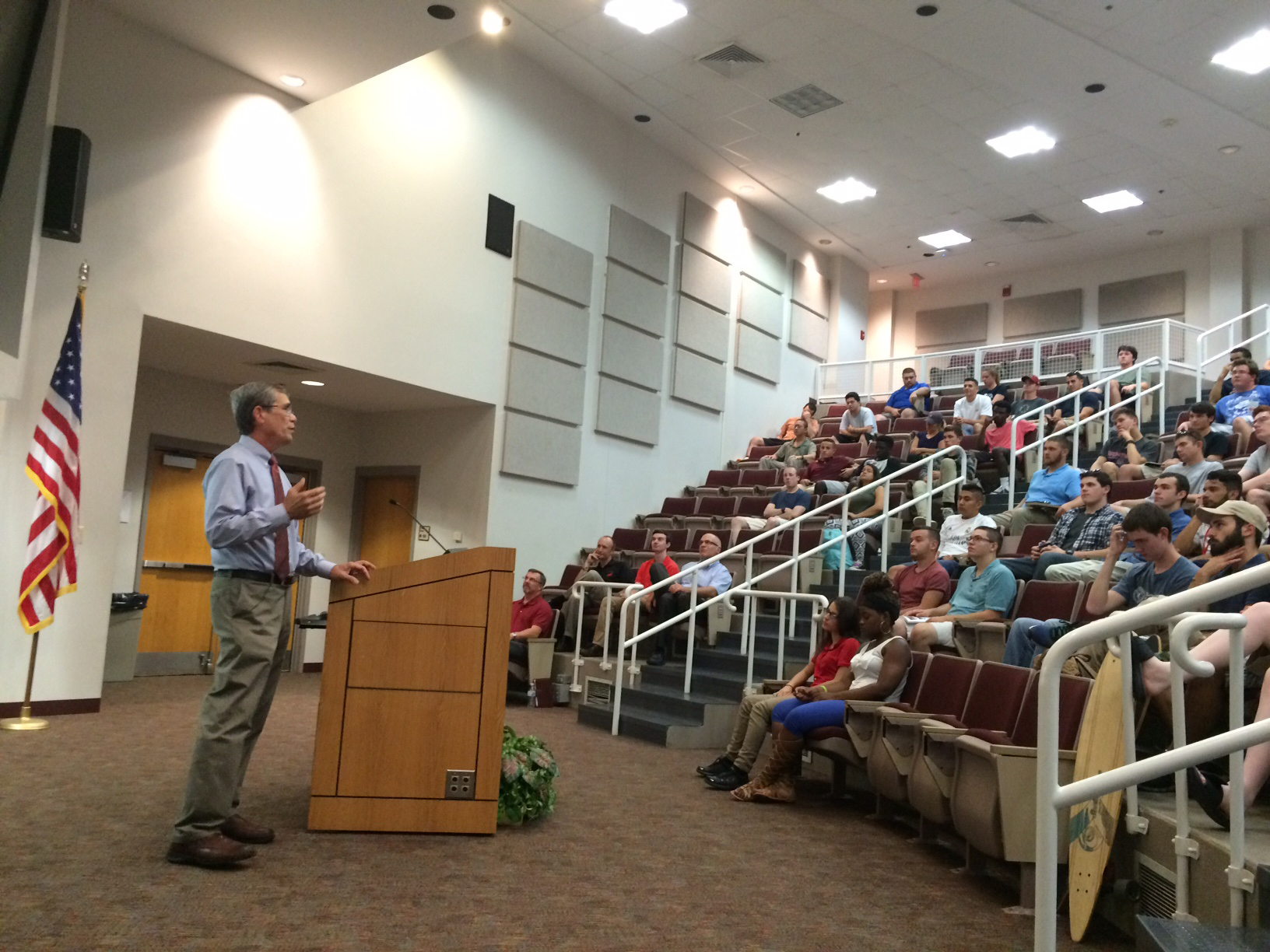Is it just me or does it seem the average cockpit is getting grayer? There seems to be evidence that the average age of professional pilots is climbing, not because there are more cockpits but because there are so fewer youngsters in line to take the places of us in the "seasoned" pilot class. I do a fair amount of public speaking to aviation aficionados from entry level to highly experienced, and it does appear the ages across the spectrum are going up. That isn't good. Smaller numbers of newer pilots means the older pilots have to hang on and there will be increasing pressure for single pilot transport category aircraft and, dare I say it, pilotless aircraft. We — all of "we" — need to do something about this.
— James Albright

Updated:
2019-03-06
It seems the "pilot brand" has lost some of its cachet. The pilot profession used to sell itself and there was no shortage of young men and women aspiring to fill military and civilian cockpits. But those days appear to be over. Be it through social media or chance encounters, newer generations of would-be-pilots are more socially connected and observe what the pilot community is thinking and are making an informed decision to avoid aviation. That is our fault, we are doing a poor job of selling the profession. At issue: the pilot profession no longer appears to be the well paying, adventure-filled, intellectually stimulating and fun job it used to be. We no longer look good to the next generation.
An objective observer would have to agree that aviation is safer than ever, but the proliferation of news and social media pseudo news would have most of the public conclude that accidents are on the rise and pilots are to blame. As untrue as these conclusions are, it cannot be argued that a greater proportion of accidents are caused by what some would call, "stupid pilot tricks." It is up to us to not only look good, but to be good.
Finally, much of what robs us of the next generation's finest is the fact we do a poor job of selling our profession for what it really is: an fulfilling, well paying, and rewarding calling. There are ways we can all do good by becoming better ambassadors of our profession.
Our past: December 17, 1903
Our future?
We already see signs of it, ab initio hires at even some major carriers are populating flight decks with pilots not ready for prime time. We need to figure out why aviation is no longer attracting each generation's brightest or holding on to them once they've been recruited.

1
Look good
The road to the left seat of an airline used to be a long one. There were fewer of them before deregulation and most of the airlines relied on U.S. Air Force and Navy pilots to fill their cockpits. You ended up with elite cadres of steely eyed aviators who looked the part and commanded immediate respect from all their passengers. Those days are over. We have a lot more airline cockpits and the flying public is often treated with seeing youngsters who have never learned to "look the look." But even worse, they never learned to behave the part either. They missed an important lesson: we are all on stage.
Airline pilots: then and now
Juan Trippe, the founder and CEO of Pan American World Airways, coined the term "Master of Ocean Flying Boats" to describe the pilots in charge of his early seaplanes. His decision to transform what used to be called the "first pilot" into the equivalent of an ocean liner's captain paved the way for what became the public's first impression of the person in the front left seat of the airplane. Gone were the dirty white scarves, goggles, and leather flying gloves. They were replaced by snazzy coat and tie with the four stripes. These captains exuded competence and gave you confidence that your life was in good hands. They were super humans that received your trust even before they had earned it. Small wonder we had no shortage of volunteers for the next generation of cockpits.
You may have had this experience recently. I was once seated in the front row in the cabin of a 19-seat commuter when the captain boarded the airplane. Her uniform was wrinkled and she wore a wool hat even though the temperature was hot enough to cause her to sweat through her shirt. Her first officer appeared next, wearing pink sunglasses and pink earbuds playing something loud enough to distract him from the noises around the airplane he had just preflighted. His hair was well over his ears. I suspected the two of being members of a different breed of pilot even before they had thrown the first switch.
But we in corporate aviation can be just as guilty of failing to look good to an observant public. A friend of mine relates this story which speaks volumes about why many observers have a negative view about pilots:
"Yes, it is hard for pilots who have been beaten down over the years to maintain that aura of pride and joy in their chosen professions. But there is also an innate inclination on the part of many pilots towards whining and complaining. Years ago in Sydney I was at the hotel’s business lounge and sitting near me was an individual talking loudly on his cell phone. Within minutes I knew that he was a demo pilot who worked for Hawker Beechcraft and that he was not only unprofessional and arrogant but that he hated his job. To non-pilots he presented pilots in the worst possible way. Interestingly enough, a few days later while I was attending an air show in Hong Kong, someone introduced him to me while I was checking out a Hawker 4000 on static display. He was one of Hawker’s “International Captains.” As we shook hands I said to him, “I was in the lounge at the Marriott in Sydney while you were talking on the phone.” The look on his face was priceless. As a DFO I would never ever hire him and would recommend against being hired by anyone."
The dream of flying "back in the day" rarely started with a focus on big transport aircraft. The lure quite often started with something much smaller . . .
Fighter pilots: then and now
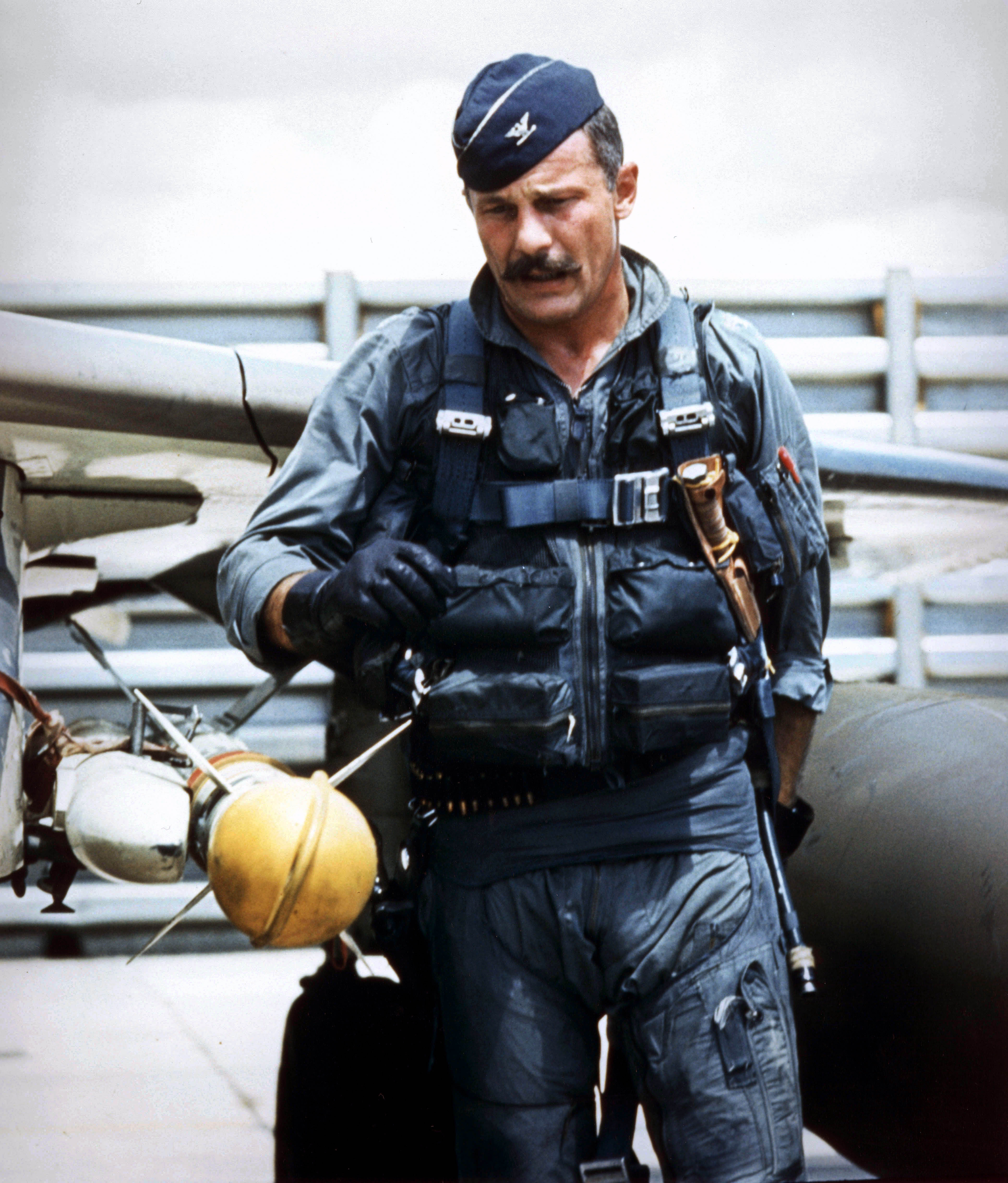
Colonel Robin Olds, F-4C, Commander of the 9th Tactical Fighter Wing, Ubon Air Base, Thailand, 1967, USAF Photo
There was a time when an Air Force or Navy fighter pilot was recognized as the leading edge of our military's combat sword. Few in recent memory more than Colonel Robin Olds, a triple ace with 152 combat missions, including 105 over North Vietnam. On September 30, 1966, he took command of the 8th Tactical Fighter Wing, based at Ubon Royal Thai Air Force Base. His predecessor had only flown 12 missions during the 10 months the wing had been in combat. Olds immediately placed himself on the flight schedule as a rookie pilot and set the tone that led the wing to reversing its earlier lack of aggressiveness. Over the years he was held up to us as an ideal pilot and leader for those of us who followed him.
From the dawn of fighter aviation, combat placed pilots against each other in a battle to get on the other pilot's "six" to find the kill shot. It was a battle of wits, yanking and banking, where stick and rudder skills were paramount. Between the Korean and Vietnam Wars, fighter pilot legend Colonel John Boyd changed the primary talent from one's hands to one's brain. Then, inevitably, computers took over.
The days of maneuvering to an opponent's "six" are over. A single F-35 fighter today can easily cost more than a squadron of fighters from the Vietnam era. These high tech aircraft can end the engagement before their pilots have visual contact with the enemy. Fighter pilots, it seems, have become computer programmers.
Stagecraft: looking good is a full time job, personal conduct matters
It is very easy to be pessimistic; some say it is our natural outlook as pilots. (We are always looking for trouble so we can deal with it more quickly.) It takes effort to be optimistic. But making that effort is key to telegraphing our positive outlook. So you have the attitude. Where do you put that on display?
Where? The answer "everywhere" may seem trite, but consider this. I try to attend the NBAA Business Aviation Convention & Exposition every year and I go to aircraft recurrent at FlightSafety every six months. When I do this I am often dismayed by what I see and hear. Many pilots show up wearing what you might expect on the beach or a local flea market. Conversation revolves around how rotten their jobs are and how they would gladly give it all up for an extra thousand dollars a month. We often fail to realize that new contacts at the Expo or our simulator instructors keep a subconscious log of everything said. They then rebroadcast it all to the next person, and so on. How you conduct yourself matters.
Dress the part.
You may be more comfortable dressed in jeans, a tee shirt, and sandals when out in public and that is certainly your right. In fact, it may be a conscious decision of yours to appear to be "one of the guys." But you might consider taking a page from a military commander's notebook. The troops don't want to be led by one of the guys.
Speak the part.
Complaining about life in general is what many of us do; it is easy to be pessimistic. But talking in public about lousy pay, having to commute, lack of sleep, or the long days paints a bleak picture to the public at large. You may not think those who overhear you will have a negative impact on you personally, but your speech can have a negative impact on their impression of your profession. Much of the public thinks you are living the dream. Don't dissuade them from that.
Behave the part.
There are few professions routinely entrusted with the lives of the public without a second thought. While we often voluntarily submit our lives to our doctors, the experience is infrequent. But many people routinely and often strap into hollow aluminum tubes with their fates completely turned over to two humans up front. The flying public dearly wants to believe those two human beings are highly trained, capable, and mature. Pay no attention to Hollywood movies glamorizing pilots who drink hard and play hard. The public might also enjoy those movies, they would prefer a more sober approach to aviation.
2
Be good
It may seem trite, but the best way to convince the public that we are not a reckless bunch of careless pilots is to stop being a reckless bunch of careless pilots. Of course me saying this to you is preaching to the choir. We must also police our own. You may know pilots who make their living flying airplanes who are anything but professional. You can impact them by setting a good example and speaking up against their poor examples.
Unfortunately there is no shortage of pilots out there behaving badly, providing poor examples. My virtue of reading this page I doubt you are one of them. But I am betting you've seen your share. There are steps you can take to impact these "bad actors." A few examples:
Competence
Learjet N452DA; pilots attempt a difficult circle without the skills to do so. These pilots had won the lottery with jobs flying the Learjet 35 when they didn't have the necessary skills to do so, as evidenced by their training records and performance on the day of their deaths. The company that employed them and the company that trained them were allowing them to fly because the rules allowed it. But better judgment should have prevented it.
Complacency.
Gulfstream GIV N121JM; pilots attempted to takeoff with their gust lock set. These pilots were labeled by the NTSB as intentionally and habitually noncompliant. Much of the public (as most of us in the business of piloting airplanes) were shocked at how unseriously they took their responsibilities to those they were flying. They flew with contract pilots who were witness to their willful misconduct in their aircraft. I wonder if enough of these contract pilots had spoken up, perhaps the crash could have been prevented and our collective reputations have been spared.
Stability.
Germanwings 4U9525; a suicidal pilot takes an airplane with 155 others with him. The pilot population is, in general, fitter mentally and physically than the public at large. But we do have our share of pilots suffering from forms of depression that can lead to suicide. It is up to us to keep an eye on the rest of us.
Seriousness.
Pinnacle Airlines 3701; pilots stalled during a positioning leg after flying above their aircraft's performance limit. These pilots were nominated for the Darwin Awards after trying to "have a little fun" by climbing to an altitude they could not maintain and then botching their stall recovery. The airline's pilots were said to have a "four one oh" club reserved for those pilots who made it that high. Every member of that club may have been complicit in the loss of this airplane, the crew, and the airline's reputation. All of us in the profession lost a little professional status that day.
3
Do good
Finally, one thing we can do to inspire the next generation of pilots is to actively seek them out, show them what the profession has to offer, and mentor them through the initially difficult stages of the career.
Reach out . . .
There are all sorts of audiences out there filled with young adults who want to learn about flying from someone who has a story or two to tell. It can be a career day at the local high school or a gathering at an aeroclub. You will be surprised at just how fascinated people will be with someone who has crossed oceans, flown down to minimums, or has simply earned a living doing something many consider the world's best hobby. If you are uncomfortable in front of an audience, start with a smaller group. Most of us pilots have had experience as instructors and talking about something you know well need not be intimidating. But you don't have to get up in front of an audience to share what you know.
Instruct . . .
If you were an instructor in an earlier part of your career, you should consider dusting off the CFI certificate and volunteer at your local flight school. Years (and decades) of real world experience can pay dividends in not only helping aspiring professional pilots to understand the challenges and benefits, but can help solidify concepts with practical advice gained from experience.
Social media . . .
Your next audience may be closer than you think. There are lots of Facebook, Instagram, and other social media outlets filled with postings by pilots which are a good start at helping recruit the next generation of pilots. But with a little extra thought, they can be much more effective.
Not all future pilots know they are future pilots. You can capture imaginations by showing what great travel opportunities exist for those of us who fly for a living. My most prolific travel period was during six months of 2008. My logbook for those eight months includes: Rio de Janeiro, Brazil; Geneva Switzerland; Casablanca, Morocco; Kilimanjaro, Tanzania; Palma de Mallorca, Spain; Barcelona, Spain; Liège, Belgium; Puerto Vallarta, Mexico; Munich, Germany; Istanbul, Turkey; Port Elizabeth, South Africa; George, South Africa; Cape Town, South Africa; Maun, Botswana; Livingstone, Zambia; Kruger Mpumalanga, South Africa; Paris, France; Dakar, Senegal; Anchorage, Alaska; Shanghai, China; and Beijing, China.
Something that struck me in many of those locations was how I was being paid to do something the other tourists were paying dearly to do. I was on Safari on the Serengeti that year and spoke to a Danish couple who had saved a lifetime for the experience. I met another couple at the Olympics in Beijing who took out a second mortgage to attend to see a grandson compete. And for all these trips, I rarely spent more than the cost of a cab.
That was my last year flying charter and I do miss it. I have great photos but none of the quality capable by one of today's iPhones. If you are having as prolific as year as that, you have a golden opportunity to inspire the next generation of pilots through your travels. In fact, here's an idea for you. Simply post those pictures and a few words for a website you can call: "Professional Tourist Pilot." (There are service providers that make putting a website up easy.) In fact, that would make a great YouTube channel too.

On Safari in Botswana, May 17, 2008
More about this: On Safari in Botswana
Mentor
A friend of mine relates this story:
"I have a middle-aged friend who had about 900 hours total time, maybe 100 in light twins, no jet, no turboprop, and not a CFI. Miraculously, he got hired as a CJ3 FO into a 4 A/C mom and pop 135 shop in PA. He completed the online 135 training modules here in Los Angeles, and moved all his junk to PA and roomed with his sister. They sent him to CAE in NJ for the 135 CJ3 SIC type, which he obtained. They paired him with a couple of their young “baby” captains, a sharp young lady and a sharp young man. They found his skills and knowledge lacking (he had never been above FL180, let alone spent time above 10,000 MSL), and after instructing/telling him more than 3-6 times about an issue, finally got very frustrated, lost patience, and emotionally and mentally “gave up” on him after about 10 months. Now, he could fly with the Chief Pilot, who is much older, and has thousands of hours, but my friend felt this was because the CP was so good he really didn’t “need” my friend’s FO help, he could do it himself in that little CJ3. At the end of the day, the mom and pop operator called him into the office, told him he was an outstanding employee, (positive attitude, always groomed, showed up on time, fun on the road, etc) but that his flying skills did not improve as quickly as they would have liked, so after his 12 months of employment, they would have to terminate him and not send him to simulator training. With no gainful employment, he is contemplating his next move, but corporate/business/charter aviation has left him with a very bad taste in his mouth. The mom and pop outfit did not have a training program in place, did not have real training captains (confident, mature, low key) in place, and although he was blatantly honest about his skills during the interview process, hired him anyway probably out of desperation because they could not recruit anyone to PA for that salary. This is a story we need to avoid at all costs."
I am sorry to say that I am guilty of setting up a pilot just this way, though thanks to the pilot's perseverance the results were better. I hired a young CL-600 pilot who had very little time in the jet and grew up flying around the serene Northwest. From there I hired him to fly a Gulfstream GV in the anything-but-serene Northeast. We worked with him for a year before it became obvious he couldn't adapt. He got another GV job flying in the Middle East and eventually came up to speed. I did not do him any favors by fast forwarding his career the way I did. I have been in this position a few times since then and have come to a few conclusions about the "how to" part of mentorship.
Select wisely
It isn't so much that the "mentee" is wrong as much that it is the environment is wrong. You cannot expect a high school quarterback to suit up for the New England Patriots and expect in a few years to have Tom Brady's replacement. By the same token, you cannot place your top CFI in a single engine flight school into an international corporate jet and hope things will turn out well during initial training.
I think about this a lot when reading accident reports, many of them tragic. You cannot blame a young, non-turbine pilot for accepting a position flying a Lear 35 when they are not remotely ready, for example. They will see it as a winning lottery ticket and, as is true with most pilots, will be overconfident in their ability to "catch up."
It is up to us to understand just what the prospective pilot is ready for.
Set the example (be a good role model)
You need to set the tone not only with the mentee, but also with the rest of the flight department. Show the mentee how it is done and show the rest of the flight department how to be a good mentor. (The more mentors the more likely your success.)
Set everyone up for success
If you have a varied schedule with varying levels of abilities in the crew force, you should tailor both to get the mentee off on the right foot. Many flight departments have a distinct scheduling process for international operations, or for trips into mountainous airports. You might also have a few pilots that are a bit "gruff" when presented a new hire needing extra care. If your manning situation and schedule permit, it would be wise to ensure your new hire's first flights are with your best crews and tamest destinations. It isn't that the schedule will be forever so constrained, but this is an investment in your new hire. You want his or her first impression of the operation to be a positive one. And, just as importantly, you want the flight department's first impression of the new hire to be a good one too.
Empathy: understand (and predict) how the subject will react
The best mentors will have played both roles in the mentor/mentee relationship. If you came up as CFI, turned turbo prop charter pilot, turned light jet pilot, then finding someone in the same progression should be a natural fit. If, however, your upbringing was different, you need to exercise your best empathy. It may be best to find someone who has walked that path.
In the case of the CL-600 pilot that I hired, I should have reached out to other Gulfstream GV pilots who came up along the same path. "Would you have been ready making the jump without all the intermediate steps?" In hindsight, I would have done this young pilot a great favor by encouraging another path.
Once the pilot is hired, you need to keep engaged and understand how things are going. "They are going great, boss!" The mentee will be reluctant to give you bad news. It is up to you to generate the trust that will allow the mentee to speak his or her mind. That is the only way you can offer the needed course corrections. Well, actually, there is one more way. And that depends on the rest of your team.
Get the entire team on board
It is hard to predict how the rest of the team will react to a new face, especially one they perceive never paid his or her dues on the way up. Getting them involved in the hiring and training process will help start the process of getting everyone on board. But you need to follow through. When any problems crop up, ask the team for solutions.
Monitor, listen, provide course corrections
One of the advantages of mentoring in aviation is there are so many metrics available along the way. A failed written exam or checkride are obvious examples, of course. But there are others, such as an excessively long preflight, or a nearly missed altitude level off. While even your most capable pilots can make mistakes, a pattern of mistakes can be a telling sign that something needs to be done.
You may be surprised to see "listen" on a list of things to do when mentoring because it is just so obvious. But differentiate the word "listen" and "hear" to understand why. I once had a flight attendant tell me the environment up front with one of our pilots was different. I didn't pursue the problem until I realized later what she meant. The new pilot was not open to critique from anyone (except me) and the other pilots started giving him the cold shoulder as a result. Had I engaged sooner we might have been able to keep that pilot from completely alienating the rest of the flight department. (We had to get rid of him.)
Be patient
There will be ups and downs and the mentee may become discouraged along the way. You should understand and expect that things may not go as smoothly as possible but with a few course corrections everything can work out well. You should let the mentee know that setbacks along the way are expected but all that is a part of the process.
4
Mail bag
do get a fair amount of mail, almost all of it very good. This reader brings up a good point. I think the economy in the U.S., in 2019, is very good. The economy in Europe? Not so much. But I do think demographics on both sides of the Atlantic are pointing to a downturn in the pilot population. (Eventually.)
Hi James,
I'm a business jet pilot from the UK, working in West Africa (because I can't find a vacancy in the UK).
I think your website is an excellent resource, and have been a viewer for a long time now, but only feel compelled to write because I disagree with your comments about the next generation!
It may be that the European experience is different from the US, but the reason there are so many aging crews on the flight deck here is because they can. I am not alone in 'waiting' for vacancies on nice UK based aircraft to appear, but why would people leave these jobs until they absolutely have to?
There's certainly no shortage of next gen pilots here, just a shortage of vacancies.
.jpg)
